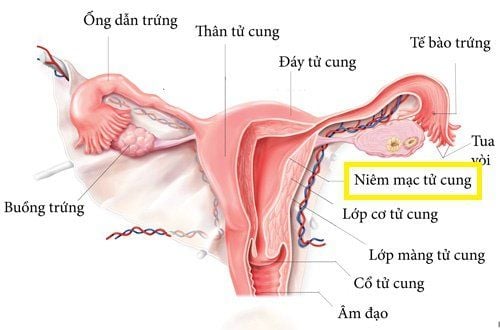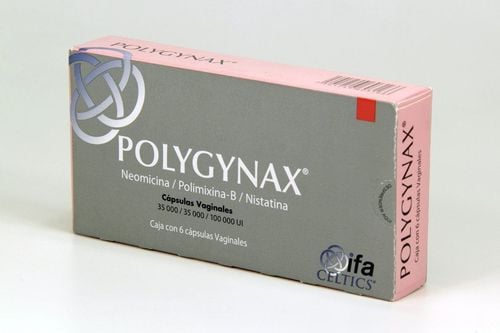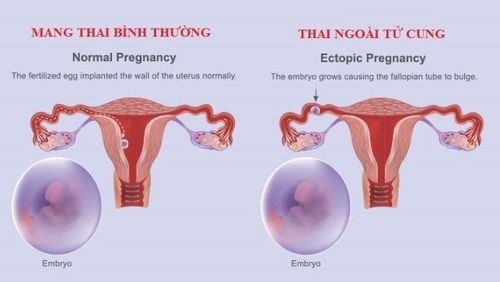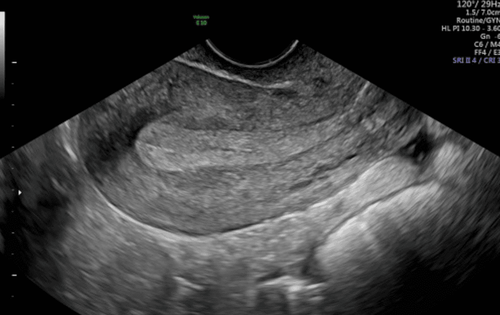This is an automatically translated article.
The growth of the uterine lining plays an important role in conception and a woman's ability to get pregnant. The lining of the uterus is too thick or too thin, both of which cause difficulty in conceiving and infertility in women.
1. What is the uterine lining?
The lining of the uterus or endometrium is the layer of tissue that covers the entire inner surface of the uterus in women, composed of 2 parts:
Basal endometrium (basal layer): Consists of tissue cells glandular and stromal, not significantly affected by the menstrual cycle; Endothelial layer (shallow layer): Affected by changes in the menstrual cycle. According to the monthly cycle, the uterine lining grows thicker under the influence of female sex hormones, ready to "nest" in case the egg is fertilized (the woman conceives). If during the cycle, fertilization does not take place, the endometrial lining will shed on its own and cause vaginal bleeding, called menstruation. Then, cells in the basal layer begin to grow again to form a new lining during the next menstrual cycle.
In case the fertilized egg implants in the uterus, the hormones produced during pregnancy will act to continue to make the uterine lining thicker, and at the same time change its structure to match the growth of the uterus. embryo and placenta. Thus, if the thickness of the uterine lining becomes abnormal, conception and fertility will be affected.

Niêm mạc tử cung hay nội mạc tử cung là lớp mô tế bào phủ toàn bộ mặt trong của tử cung ở phụ nữ
2. What is the normal thickness of the uterine lining?
The thickness of the lining of the uterus will have a certain change according to each different phase of the menstrual cycle in women:
The period after menstruation This is the period when the lining becomes the thinnest due to recent pregnancy. shed during the previous menstrual period. At this time, the thickness of the uterine lining is only about 3-4 mm, enough to cover the entire inner surface of the uterus.
Period about 14 days before menstruation During this period, the endometrium is not only affected by the hormone estrogen but also by progesterone, causing the uterine lining to thicken rapidly and secrete secretions. gel. At that time, the mucosa is about 8 - 12 mm thick and this is the most suitable thickness for fertilization to take place.
Premenstrual period At this time, the thickness of the uterine lining can be up to 12 - 16 mm. If conception does not take place successfully, the endometrial layer will slough off on its own and exit through the vagina, forming menstruation.
3. Effect of uterine lining on fertility
3.1. The uterine lining is too thin The lining of the uterus is too thin, which causes menstrual problems, such as prolonged menstrual cycles, amenorrhea (low volume), ... affecting fertility in women. In women, the lining of the uterus is thinner than 8mm after the egg is fertilized, it will make it difficult for the embryo to attach to the uterine wall. If the embryo can attach to the uterine cavity, it will then be easily detached, leading to stillbirth.
3.2. Uterine lining is too thick Thick uterine lining, also known as endometrial hyperplasia, is caused by excess estrogen in the female body and is determined when the thickness of the endometrial layer greater than 20 mm. This is one of the reasons that hinder pregnancy because this phenomenon causes hormonal imbalance, leading to menorrhagia, prolonged secondary amenorrhea, and the corpus luteum does not degenerate, still producing hormones. genitals, causing the uterine cell layer to thicken and not shed.
In addition, thickened endometrium can be a sign of another underlying disease, such as polycystic ovary syndrome, ovulatory disorder,... that slows a woman to have children.
Abnormalities in the growth of the uterine lining can only be detected by ultrasound. Therefore, women of reproductive age should have regular gynecological examinations to screen for dangerous diseases early and take timely intervention measures to limit the impact on women's fertility.
4. How thick is the uterine lining to be able to get pregnant?

Thông thường, nội mạc tử cung có độ dày trong khoảng 8 - 10 mm được coi là kích thước lý tưởng nhất cho sự thụ thai ở phụ nữ
Thickness of the lining of the uterus plays an important role in conception and fetal development. Normally, the endometrium with a thickness of between 8 - 10 mm is considered the most ideal size for conception in women.
At that time, the fertilized egg can implant and develop into a healthy fetus. If after the end of the menstrual cycle, the uterine lining is between 8-14mm thick, this is considered a good sign that a woman has the ability to conceive successfully. Endometrium measured on day 12 of the cycle before transition to the luteal phase in the range of 7-14mm showed constant and maximal conception rates, beyond which the rate gradually decreased.
Vinmec International General Hospital is currently providing Gynecological Examination and Screening Package, helping women to detect early inflammatory diseases and gynecological cancers (cervical cancer), including: abnormalities of the uterine lining. Vinmec brings together a team of leading obstetricians and gynecologists, modern medical equipment, professional service quality to bring satisfaction to customers when visiting here.
Please dial HOTLINE for more information or register for an appointment HERE. Download MyVinmec app to make appointments faster and to manage your bookings easily.













